Photo

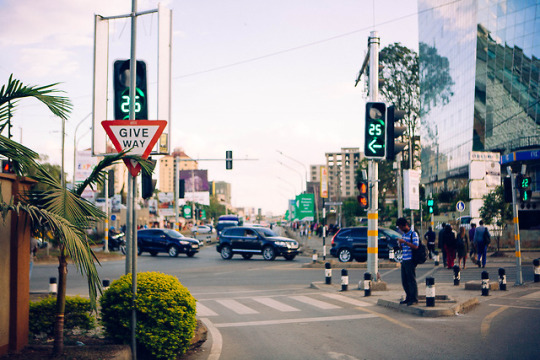
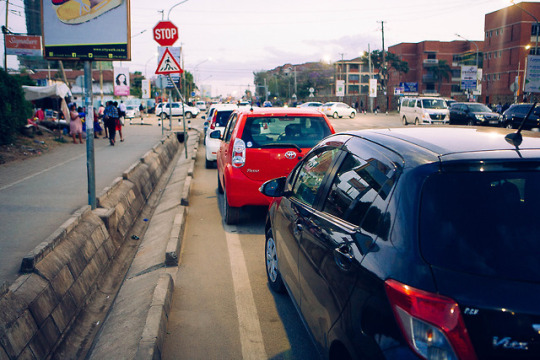
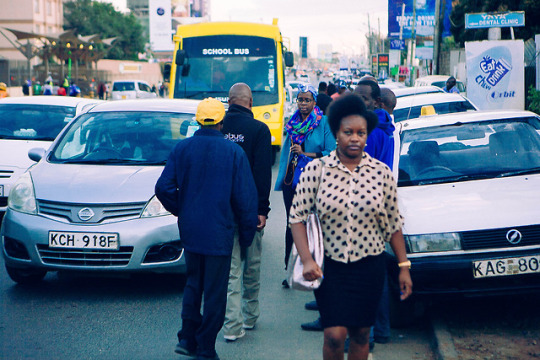
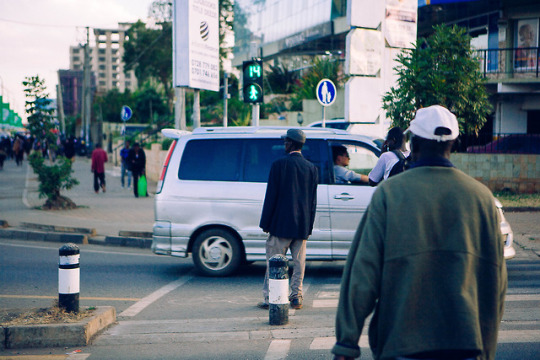
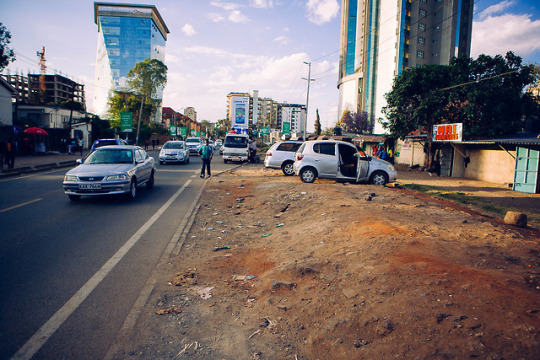
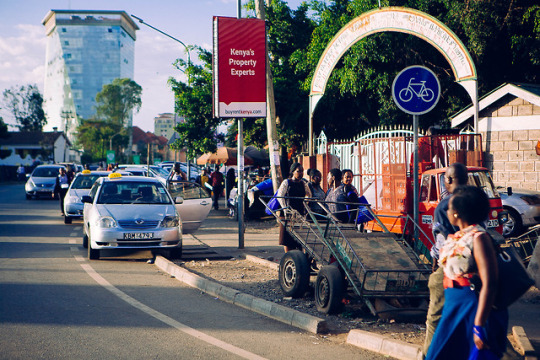
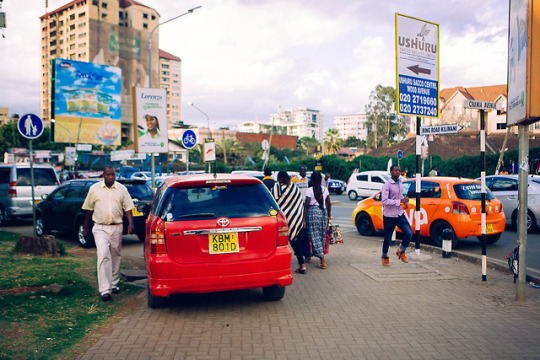
Vehicles have dictated the direction urban planning has taken in many cities for over fifty years. Its only recently that cities are realizing that we cannot continue choking ourselves and planning everything around cars. Congestion, Pollution, Selfishness, Safety and non compliance to basic rules are some of the challenges cities face with personal vehicles.
These images, taken a long Ring Road Kilimani, display some of these challenges in our urban mobility- cars occupying pedestrian walkways, drivers not stopping at zebra crossings, traffic congestion, illegal on street parking etc.
1 note
·
View note
Photo
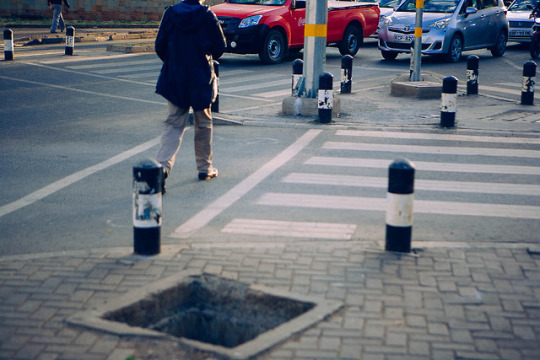
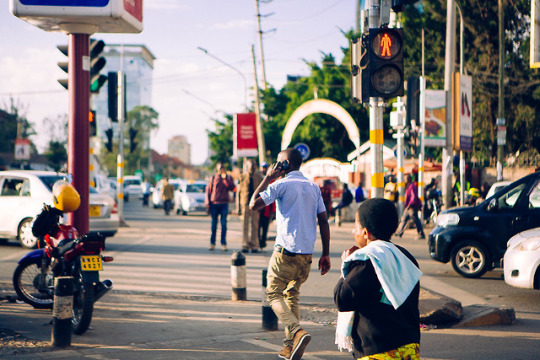
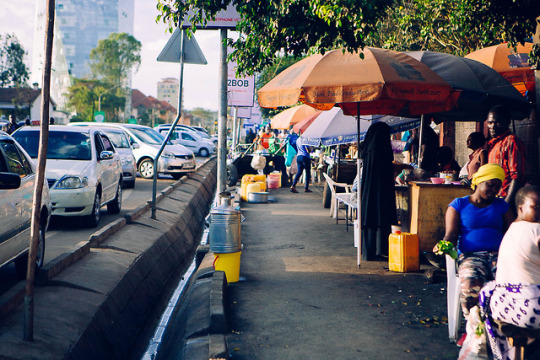
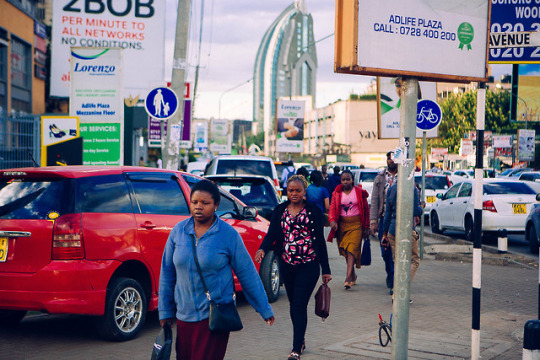
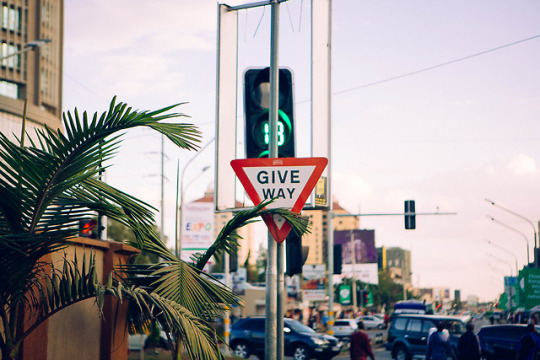
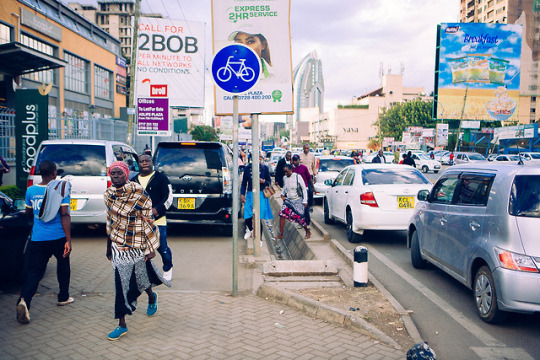
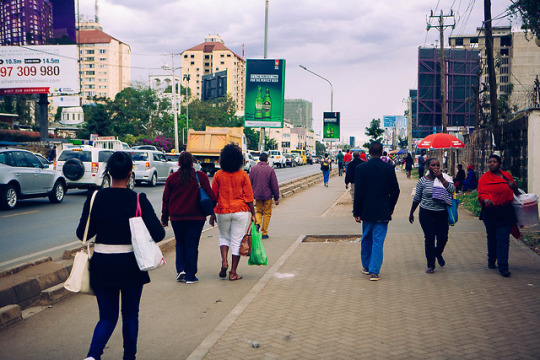
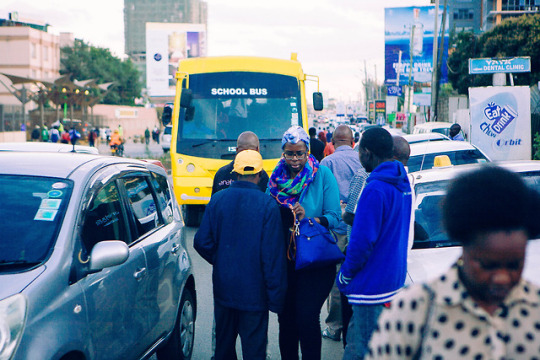


Pedestrians: Over 50% of Nairobians walk to work but the city lacks comprehensive pedestrian infrastructure. The images taken here display how pedestrian walkways have literally been taken over by vehicles and informal vendors. In some places, the infrastructure does not even exist.
However, all is not negative, Vendors in other areas have set up their businesses in a manner that will draw customers from the pedestrians.
Photos by Msingi Sasis
1 note
·
View note
Photo
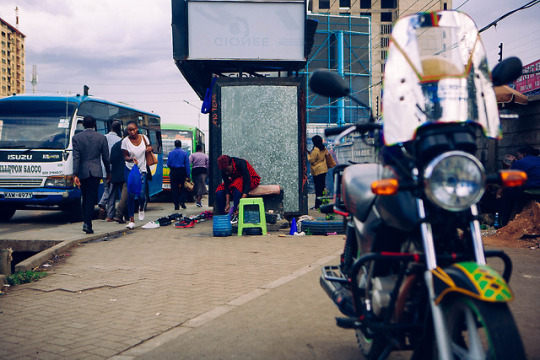
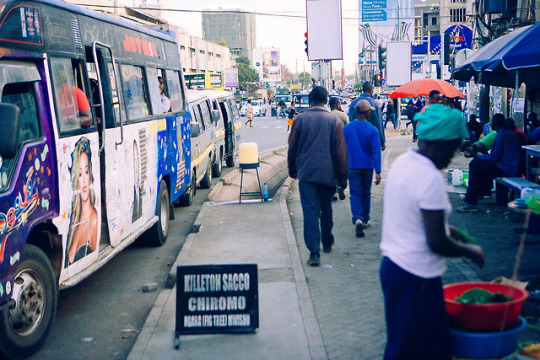
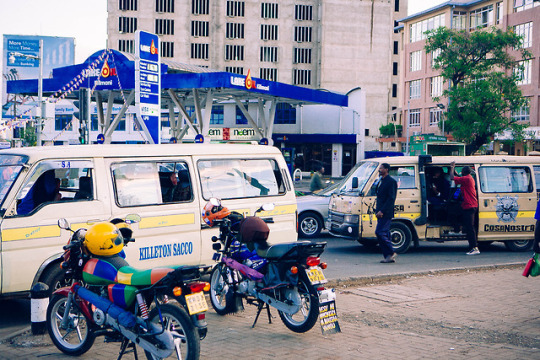
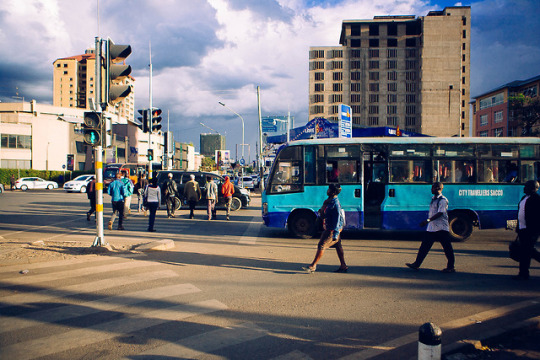

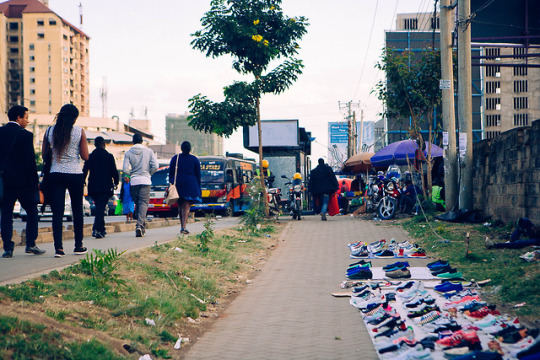
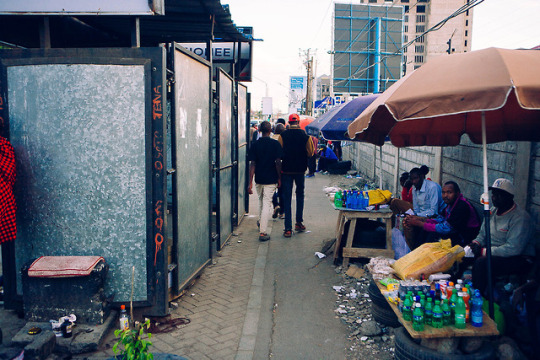
Public Service Vehicles in Nairobi are said to be highly unregulated though within their set-up they have internal mechanisms to ensure order and service to their clients.
PSVs have also brought a new angle towards Transit Oriented Development at a smaller scale by attracting several informal businesses around their major hubs. Here we see umbrella kiosks that sell items throughout the day as well as hawkers who come to display their wares at rush hours. Other services like shoe shiners and food vendors also set themselves here.
Aside from that, PSVs are also known to flaunt many rules and here we see ‘on- street boarding.’
0 notes
Photo

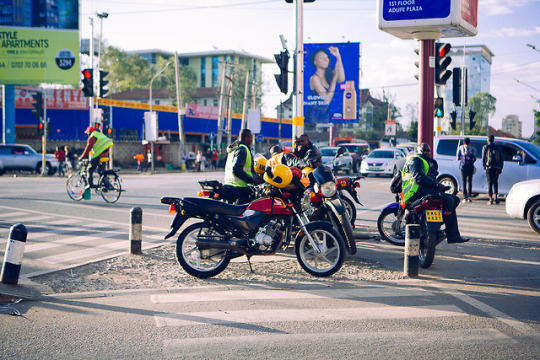
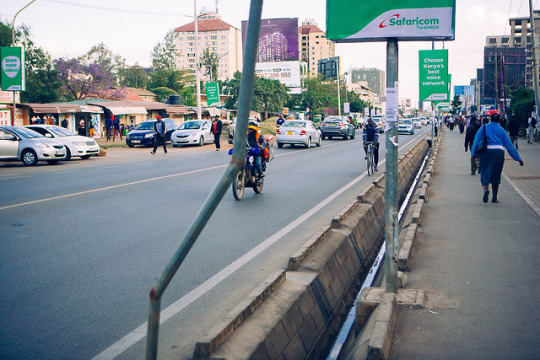
Implementing Creative Methodological Innovations for Inclusive Sustainable Transport Planning (i-CMiiST) takes you through a photographic journey of bodaboda riders along Ring Road Kilimani. With no facilities, they are forced to park on medias, and pavements as they wait for their clients.
0 notes
Photo
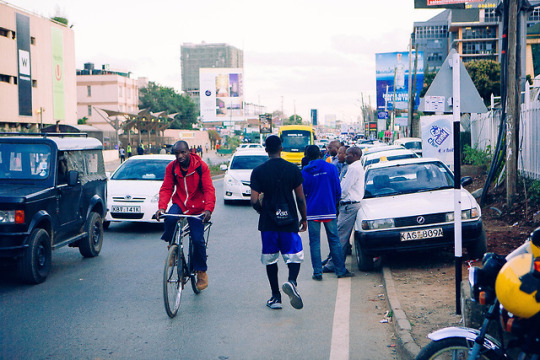





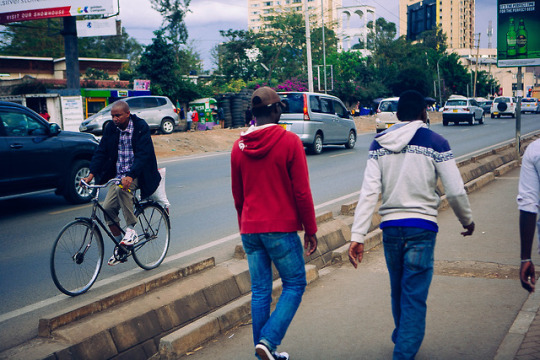
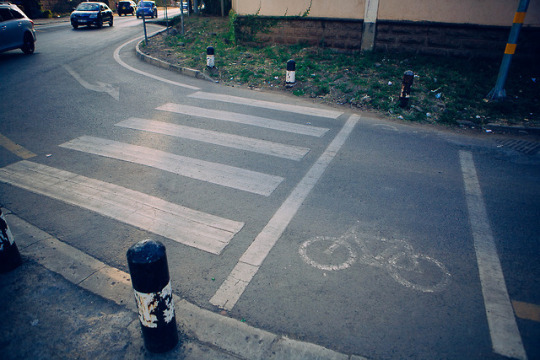
A Photographic display of the experiences of Cyclists along Ring Road Kilimani and its environs. Images portray contests for space with other road users including pedestrians, motor cyclists and drivers. The element of poor infrastructure also emerges as well as lack of safety gear by cyclists.
Pics by Msingi Sasis, Research by icmiist team
(Implementing Creative Methodological Innovations for Inclusive Sustainable Transport Planning (i-CMiiST)
0 notes
Note
Why are there no new posts or nothing has been happening?
naipolitans.or.ke
0 notes
Link
0 notes
Link
Urban October: Celebrating Public Spaces
The proposed Sustainable Development Goals highlight Public Spaces as a key and important topic: “Goal 11 Target 7 – By 2030, provide universal access to safe, inclusive and accessible green and public spaces, in particular for women and children, older persons and persons with disabilities.” It is in this regard that UN-Habitat together with our partners are honoured to celebrate and launch this theme during Urban October 2015.
URBAN OCTOBER: Public Spaces for All (africancityplanner.com)
Petition: Ban Plastic Bag use in Nairobi
WIRED Looks at 8 Cities of the Future
Design Liberland: Competition Seeks to Masterplan New European Micronation
Play The City | Ekim Tan | TEDxDelftSalon
0 notes
Text
Land and Energy: Arriving at a balance between public and private goods
Naipolitans partnered with Brands and Beyond, Strathmore University and the Standard Group to hold the first public energy forum. The Theme of the forum was ‘The rising conflict of land and compensation in the energy sector.’ Among the panelists were

Mr. Robert Pavel, Energy Regulatory Board
Mr. Aziz Chivanga, National Land Commission
Eng. Peter Mungai, General Manager, Business Strategy, Kenya Power
Dr. (Eng) John Mativo, Chief Manager, Planning and Development, Ketraco
Ms. Flora Okoth MD, Kenya Pipeline Corporation
With increased investment in the energy sector, land remains a central point and faces various challenges including ownership, acquisition and compensation.
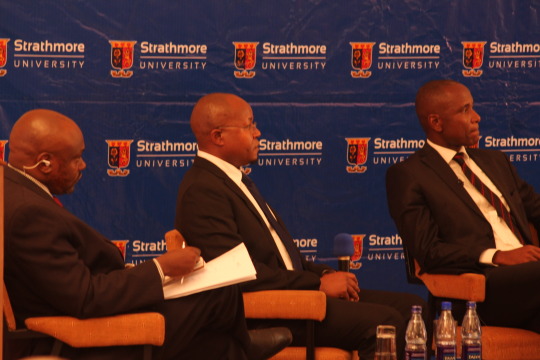
Each body plays a different role in the energy sector and has a different perspective towards land use. Kenya Power, for example, requires ‘right of way’ for power distribution lines but buys land in its own name for sub-stations construction. KETRACO on the other hand, is concerned with transmission and encounters land challenges like widths required for various voltage lines and these may require resettlement plans and compensation. Their lines go through people’s property which brings a huge challenges. In many cases, there are demands for higher compensation by owners paid in previous years’ e.g. in Isinya it has delayed energy projects. Kenya Pipeline is putting up a new line from Mombasa to Nairobi on land, and they anticipate issues from land owners on the corridors but will handle these issues as they come.
Huge land compensation sums are competing with other development needs and budget constraints, slowing development speed. e.g. SGR had to use 11 Billion for land compensation! Lack of documentation by beneficiaries is also a challenge constraining “just and prompt payment” for land. ERC ensures fairness and sustainability. At the moment, Kenyans are crying for cheap and reliable power supply. Land is at the center of the energy sector in Kenya and is therefore central to energy success. This brings out the importance of all the energy sector players to work hand in hand.
Land Valuation does not differ from sector to sector. It depends on many other factors like access, location, developments on the land. Compensation of land caters for the usage of land based on how much has been used, and the loss experienced. KETRACO values how much or what percentage of land will be affected or disrupted or use of land lost by easements and/or way leaves. Projects have to go through communities that is why the NLC engages County Governments.
Unfortunately, The Community Land Bill has not yet been enacted and thus County governments have to be engaged where energy infrastructure passes through. He reminded attendants that the Land Act allows for “’compulsory acquisition of land” regardless of disputes.
KETRACO compensates people to allow them to pass through their land. However, politics makes the issue even murkier. All the intended projects are to bring services closer to the people and thus the law allows for land acquisition; that is why when need be, land will be acquired to assist with energy distribution. One’s land’s size doesn’t change in some cases, it just gets used up for another project.

Where access to land becomes expensive, it becomes difficult to provide services. A problem normally emerges where once locals are paid they create a dispute refusing evacuation from area (claiming rise in land prices) thus delaying projects. Land owners need to remember that energy infrastructure provides services benefiting the public (include they themselves).
Concerning payment, the NLC CEO explained that the law provides for ‘full payment’ and not in part/ yearly rents.They also face resistance when they want to educate the communities. The challenge being that rich men are created overnight and soon turn into paupers because they mismanage the money. If the compensation is done monthly, the charges for the services offered will go up.
Kenya Power is not funded under the National Treasury unlike other energy sector players (It is 50% government owned with 49% private ownership). Thus it operates on an ‘entrepreneurial spirit’ requiring it to operating prudently. It has negotiated several IPPs putting up plants on private/ communal land. Private investor handles land compensation. ERC, on the other hand has to ensure power to be reliable and fair in terms of cost. He confirmed that at the moment, all costs that go into energy generation & distribution (including land compensation) go into your monthly bill. Kenya Power is looking at 2020 and 70% of Kenyans to be connected.
The limitation for use of land through which transmission lines pass through is lower than that for distribution lines. The largest issue for power distribution lines is encroachment which delays access to, and repair of infrastructure over outages.
The NLC intends to have an overall oversight role on land-use planning nationwide. This has put them against physical planners, who are advocating for the Physical Planning Amendment Act over the Land Use Planning Bill. He explained that as one nation laws should be developed for purposes of posterity. Energy infrastructure (and all infrastructure) sits on land thus we need frameworks that have in mind the common good. Compensation may also take the angle of land to land and not land to money. Though the law allows for land banking (setting aside land for future use) and traditional dispute resolution mechanisms, NLC is only 2 years old & these are not easy tasks.
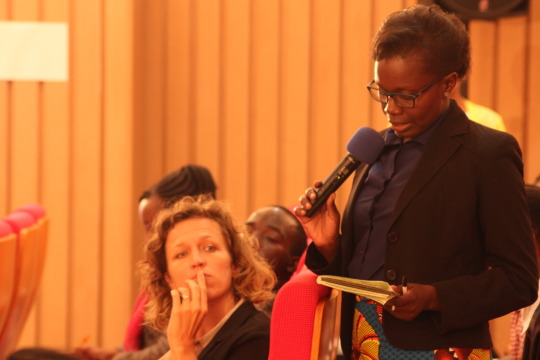
Vandalism has faced is costing the nation a lot of time & money (most parts are imported). On generation, we are currently at 2111 MW. 21 PPAs have already been signed, to bring in over 1900MW of power. Their plan is not only to rely on Hydro Power.
Kenya is trying to change her energy mix from pure hydro reliance to geothermal, wind, solar, coal and gas. KenyaPower partnering with county governments to “power up our cities” through street lighting, to encourage 24-hour economies. There is a formula which is able to serve the customer in a cheap price. There is a plan to shift from reliance on hydro power, towards renewable energy, to light up places and supply energy demand.’
In conclusion, land is valued by independent valuers, land owners can then get their own private valuer sort disputes with ISK. Citizens have to appreciate electricity as part of development. Energy infrastructure is always about reasonable projects and development and thus citizens and county governments should support energy projects through land provision. There is need to do a lot of education about Land compensation and sensitization on different land compensation mechanisms (easements, compulsory acquisition, etc). ERC has approved a preferential tariff for street lighting for county governments as the Government pursues VAT exemption for solar projects to increase uptake.
0 notes
Text
Date: Thursday, 30th July, 2015
Time: 3.00 p.m.
Venue: Strathmore Business School Auditorium
Please click here to book attendance
Dear Urban Enthusiasts,
Naipolitans has partnered with Brands & Beyond Ltd, the first energy communication company, Strathmore University Alumni Relations Office and Strathmore Energy Research Center to hold the first public energy forum involving various panelists from Industry, Business Sector and Policy Makers. This is an opportunity to enable the various stakeholders to discuss the opportunities and challenges facing the energy sector.

The theme of the forum will be 'The rising conflict of land and compensation in the energy sector.'
The event will also mark the launch of 'Watts Up,' the first magazine focusing exclusively on the energy sector in Kenya. Panelists will include key sector players in the energy sector and service providers.
Please click here to book attendance
*Strathmore Business School is located in Madaraka Estate, off Langata Road
0 notes
Text
Public Space project “Must Seed” in Dandora, selected for implementation at the Making Cities Together Lab in Nairobi

Last week (May 4th-8th) the Placemaking Design Lab of the Making Cities Together project on public space in Nairobi took place. International experts, local experts and local organisations worked together on three selected public spaces: the streets of Korochogo, the court yards in Dandora and the JeevanJee park in the CBD of Nairobi.
It was an intense week, with workshops and lectures at the UN Habitat compound and the Memorial Park in the city centre, fieldtrips, a business-event and on Friday the final presentations during a public event at Naipolitans’ platform in the Memorial Park. At the end of the week, after this productive workshop the proposal of the designteam of Dandora was selected for implementation by a jury consisting of representatives of some of the (future) stakeholders of the project Placemakers, the International New Town Institute, Un Habitat, The Technical University of Kenya DASUDA, Philips and Kounkuey Design Initiative.
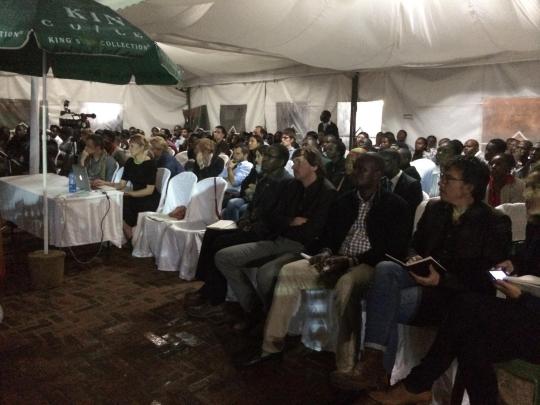
“Must Seed” is a strategy for up-scaling the model of the Mustard Seeds Courtyards; from the courtyards to the streets to the neighbourhood with the leave-way,the dumpsite. The future vision even includes the scale of the city through the transformation of the area around the nearby station and innovative re-use of the closely connected abandoned factories.
The strategy shows a realistic roadmap of implementing the expertise of the local organisation on the different scales of the public scale of the neighbourhood.
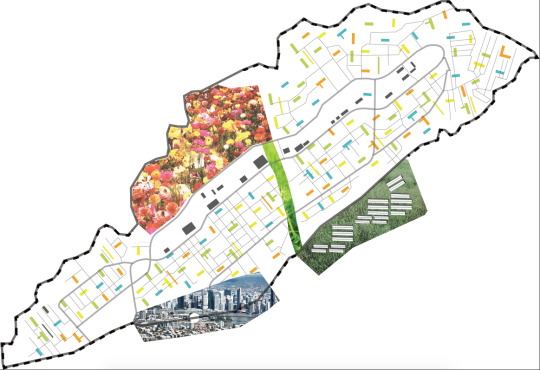
The organisers of Making Cities Together (Placemakers, IFHP and the International New Town Institute) will work closely together with the local organisations on the first step of the realisation of “Must Seed” in Dandora.
DASUDA, UN Habitat and the local government are the main partners in the implementation of this model, which will be an example for other neighbourhoods in Nairobi and other cities in Kenya.

Text and images from International New Town Institute
0 notes
Text
7th May 2015
Dear Urban Enthusiast,
On behalf of the organizers of the ‘Making Cities Together’ design Lab, Placemakers would like to thank you most especially for taking the time and braving the rain to join us for the presentations of the outcomes of the design Lab at the Naipolitans get-together held at the Bomb blast memorial park on the 7th of May, 2015.
Your presence and continued support was very inspiring, encouraging and reassuring. It is our hope that we will continue working together and promoting conversations to make Nairobi a better place to leave, work and play.
As you may know, among the three placemaking cases, the changing faces initiative of Dandora emerged top. This was selected by a jury consisting of representatives of some of the (future) stakeholders of the project: UN-Habitat, Placemakers, The International New Town Institute, The Technical University of Kenya, DASUDA, Philips and Kounkuey Design Initiative.
The organizers of Making Cities Together (Placemakers, International Federation of Housing and Planning and the International New Town Institute) will work closely with the local organizations on the first step towards the realisation of “Must Seed” in Dandora this year.
Moving forward, in case you have any suggestions and or questions, you are more than welcome to contact us.
0 notes
Link
Date: Friday, May 8th, 2015
Time: 6.00 p.m
Venue: August 7th Memorial Park, Nairobi (Bomb Blast)
Please Click here to book attendance
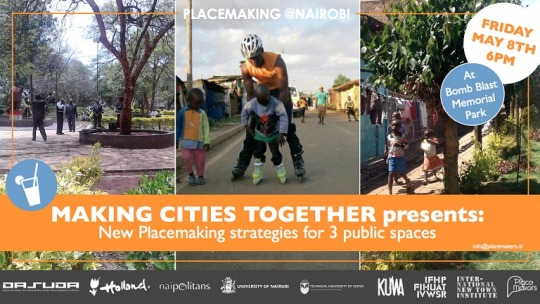
Dear Urban Enthusiasts,
Interested in exploring how to transform public spaces into pleasant, welcoming and interactive places, contributing on how to up-scale and replicate small scale public spaces improvement initiatives, and shaping the citywide vision for public places? Then join us as we take this conversation a notch higher.
This will be the climax of a Placemaking Design Lab which runs from May 4th-8th. At the Lab, 3 international and local expert teams will be challenged to develop placemaking strategies for 3 public spaces in the following areas: the city centre, a residential neighbourhood - Dandora and an informal settlement - Korogocho.
The Lab is part of the 'Making Cities Together' project - a year-long international knowledge exchange & platform about Placemaking & Public Spaces. The project is initiated by the International New Town Institute, the International Federation of Housing and Planning and Placemakers in close collaboration with Nairobi City County, UN-Habitat, Embassy of the Kingdom of the Netherlands, private sector, DASUDA, UoN, TU-K, Kuwa among other local stakeholders.
Program:
1. Introduction by the MCT Project partners
2. Short intervention about Nairobi's public spaces and the Lab's contribution
3. Presentation of Placemaking Strategies by the teams
4. Selection of the winning concept
5 Cocktail
0 notes
Link

‘Jane’s Walk’ in South C Ward
Date: 1st May 2015, 9:00 a.m.
Naipolitans is organizing the first ‘Janes Walk’ in Nairobi, Kenya.
What is a Jane's Walk?
Jane’s Walk is a movement of free, citizen-led walking tours inspired by Jane Jacobs. The walks get people to tell stories about their communities, explore their cities, and connect with neighbours.
Janes Walks are held all over the world on the first weekend of May. The first one in Nairobi will be in South C Ward, bringing the residents together with urban professionals and other stakeholders. It aims at understanding the challenges facing the ward from a planning perspective with focus on community, bottom up planning, local economy, mixed use development and understanding the city as an ecosystem.

How do Jane's Walks Work?
Jane's Walks are free, locally organized walking tours, in which people get together to explore, talk about and celebrate their neighbourhoods. Where more traditional tours are a bit like walking lectures, a Jane's Walk is more of a walking conversation. Leaders share their knowledge, but also encourage discussion and participation among the walkers. A Jane's Walk can focus on almost any aspect of a neighbourhood, and on almost any topic you can think of. Walks can be serious or funny, informative or exploratory; they can look at the history of a place, or at what's happening there right now. Anyone can lead a walk -- because everyone is an expert on the place where they live!
Important Information
Meeting Point:
CID Sports Club, Muhoho Avenue South C (Next to MOW Sports Club) - has safe and secure parking
Some of the selected places to visit
These were decided through discussions with residents
South C Playground (attempted grabbing stopped by Greenbelt Movement)
Kongoni Primary School
South C Health Centre
Residents proposed site for South C stadium
Informal businesses on Muhoho Road
Red Cross Solar Street Lighting
Matatu Terminus, Mugoya estate
Registration Fee: FREE! – Just turn up, and we walk the talk!
Click here to book attendance
0 notes
Link
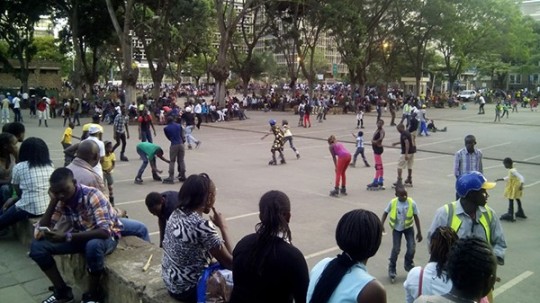
IFHP together with INTI and Placemakers is pleased to announce an Open Call for participation in a public-space making research lab in Nairobi, Kenya. The “Making Cities Together - planners becoming placemakers” project is looking for dynamic international urbanists- - ranging from urban designers, planners and social scientists to architects and other creatives with experience in co-designing public spaces to join the lab from the 4th to the 8th of May 2015 in Nairobi.
Making Cities Together is a think and action-tank initiative by Placemakers, INTI and IFHP. Each partner brings specialized knowledge and different insights to the table with a shared commitment to more integrated and just public space in Nairobi.
Placemaking in Nairobi
In Nairobi, public spaces suffer from degradation, overcrowding, and insecurity, thereby denying city residents access to much-needed community, recreation and leisure facilities.
Last year, Placemakers and the Technical University of Kenya conducted a citywide inventory of socio-spatial participatory planning initiatives in Nairobi. The outcome indicated that Nairobi’s citizens are leaders in participatory urban development and using the Placemaking approach to solve this public space crisis. The initiatives explored during this inventory phase are building truly inspiring public places. However, these efforts face multiple challenges and often lack access to local expertise.
How can we improve these spaces? And how can we empower communities and organizations to improve the quality of their environments? For the project ‘Making Cities Together’ we invite you to co-create inclusive spaces in Nairobi. The ultimate goal of the research lab is to create a framework for practical Placemaking strategies at the city scale. These strategies will then be actualized on one site to act as a case for benchmarking.
http://us6.campaign-archive1.com/?u=7fda38539ba4f22023f658bb4&id=753d30e64d
0 notes
